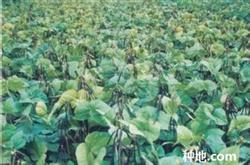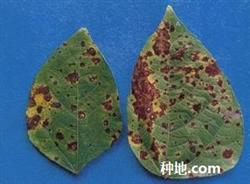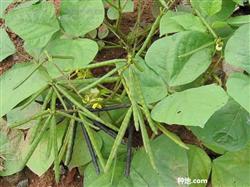What should we pay attention to when planting mung beans?

What should we pay attention to when planting mung beans? Please point out that the cultivation of mung beans should be paid attention to: 1. Reform the farming system and increase the yield per unit area. Our city always sows mung beans after planting red pea, and soon after emergence, it is affected by high temperature and summer drought, which leads to insufficient vegetative growth, poor reproductive growth, relatively shortened growth period and reduced yield. To sum up the local and non-local experience of high yield, we must reform the system and seize the opportunity to rush wet sowing from 7 days before wheat harvest to 15 days after wheat harvest, so as to prolong the growth period and achieve the purpose of increasing yield. 2. Select varieties. According to the market demand, we should choose anti-lodging, developed branches, exuberant growth, short growth period, simple cultivation, concentrated pods, high yield, oil green in color, big and full grains, easy to cook and without stone beans. Import slag good taste of "Anyue oil mung bean" and "Zhonglu No.1" as the main promotion varieties in our city. 3. Sowing date, sowing quantity, density and sowing method. If the woodland is idle in spring, the sowing date can be arranged in the first or middle of April; if there is a previous crop, it can be arranged to sow in the box after spring harvest, and the suitable sowing date must be arranged before the end of May to preserve seedlings and obtain high yield. We should insist on grabbing the moisture in time and sowing seeds when the soil is wet after rain. In case of drought, we can shower nests with clear dung water after sowing. Use 1 kilogram of seeds per mu, mix the seeds with 10 grams of ammonium molybdate and 10 kilograms of water (the unused water is set aside), and sow the seeds with a small amount of dilute mud wrapped in calcium magnesium phosphate fertilizer. The sowing specifications are as follows: net sowing 2 meters, row spacing 50 centimeters, litter spacing 40 centimeters, 3200-3400 nests per mu, 5-6 seeds per litter, 2-3 seedlings per litter, about 9500 seedlings per mu; fruit forest land, on the basis of the 40cm distance between the foot and the base of fruit trees, and then 2 meters open, which is roughly the same as the sowing specification of net cropping; intercropping refers to net cropping specifications and determines the sowing amount per mu according to the situation. 4. application of base fertilizer: generally, 35 kg of calcium magnesium phosphate fertilizer plus 1000 kg of ash fertilizer or 50 kg of plant ash per mu, and then evenly mixed with sand loam 300kg cover seed, or 15-20kg of high-quality organic compound fertilizer and 300,500kg of sandy loam soil had the best effect. 5. Field management: check and replenish seedlings in time to ensure the whole seedling, fix seedlings at 4-leaf stage, and raise seedlings with 5 kg ammonium bicarbonate and 1000 kg dung water per mu in barren land. Ploughing, weeding and soil transmission should be carried out in time before the early flowering stage to prevent lodging. In the early flowering stage, the remaining ammonium molybdate water was mixed with 40 kg of water and fertilized outside the dorsal root of the leaf. Pay attention to the prevention and control of bridge insects and leaf borer. The chemical weeding technology was vigorously popularized, the soil was closed with "Duer" or "Acetochlor" EC before sowing, and the plots dominated by Gramineae weeds were controlled with "efficient cover grass energy" or "Jingshoude" EC after emergence; the land dominated by dicotyledonous weeds was controlled with "Huwei" water agent. 6. Harvest, drying and storage: harvest in batches and in time, generally 2-3 batches. The seed coat of mung bean is easy to absorb moisture. If the temperature and humidity are high during storage, it is easy to lose the germination rate, even mildew and deterioration. Therefore, mung bean seeds should be stored in a dry, ventilated and low temperature environment and can be packed in gunny bags. Under the condition of 12-14% water content, the storage height does not exceed 1 meter, and the stacking height does not exceed 6 bags. If the number of seeds is small, it can be stored in the jar. Usually the bottom of the altar is filled with a small amount of quicklime to absorb moisture, then padded with gunny bags, and then the sun-dried and cooled seeds are loaded into the altar. finally, the mouth of the altar is sealed with plastic sheeting and placed in a dry and cold place. It should be noted that when sowing, chemical fertilizer can not be used as seed fertilizer, especially can not be mixed with nitrogenous fertilizer or superphosphate. Don't sow seeds before the rain. Must resolutely and timely uniform seedling fixed seedling, do not want too much, in order to ensure good ontogeny. Seeds should be filled with bamboo utensils and dried step by step from thick to thin. Do not expose to concrete, slate and cement to avoid breaking the skin, so as to prevent the destruction of protein structure and affect the quality of seeds and commodities. Seed moisture is generally required to be reduced to less than 13%. After drying, mung beans should not enter the warehouse while it is hot, but should be cool after entering the warehouse. Attention should be paid to crop rotation, and the yield of repeated cropping for many years will be seriously reduced. Click to get more mung bean planting technology click to get more grain and oil planting technology
- Prev

How to prevent and cure mung bean leaf spot?
How to prevent and cure mung bean leaf spot? Please point out that the occurrence of mung bean leaf spot is closely related to temperature and humidity. Under the conditions of 85% to 90% relative humidity and 25 to 28 degrees Celsius, the pathogen conidia germinated fastest. When the temperature reached 32 degrees Celsius, the mycelium grew most vigorously and the disease developed most rapidly.
- Next

How can mung bean be planted with high yield?
How can mung bean be planted with high yield? Please point out that mung bean has drought resistance, barren resistance, wide adaptability and short growth period, which is generally only 60-120 days; its suitable sowing period is very long, and it can be sown from early and middle April to early August. The main points of cultivation are as follows: first, soil preparation. Mung bean is a deep-rooted crop, and cotyledons are hypertrophic, which requires soil preparation.
Related
- The first cup of black tea in spring, the flavor and history of tea gardens in Kenya, Africa
- The computer can not only choose potatoes, but also grow tea rice. AI will grow winter oolong tea champion.
- It is not only the inflated tea bitten by insects, but also engraved with the four seasons tea in Beipu.
- The Oriental Beauty Tea Festival in Zhuxian County takes the stage at the weekend to experience the plus-size feast of oil tea.
- & quot; Oriental Beauty Tea & Exploration of Emei in Hsinchu, the hometown of quot;
- The new variety of strawberry "Tainong 1" dessert is the first choice with mellow aroma. Crimson gorgeous
- History of Tea in Taiwan: from Wild Inner Mountain to Export Tea Garden
- Two types of Taiwan Oriental Beauty Black Tea won the British three-Star Award for Childhood Tea Xiang Zhang Jiaqi changed from pilot to champion tea maker.
- Banana species and varieties: the planting history of Taiwan Xianren banana and dwarf banana is long, is banana disease resistant?
- Coffee planting Technology: Qianjie Coffee from Seedling to harvesting

